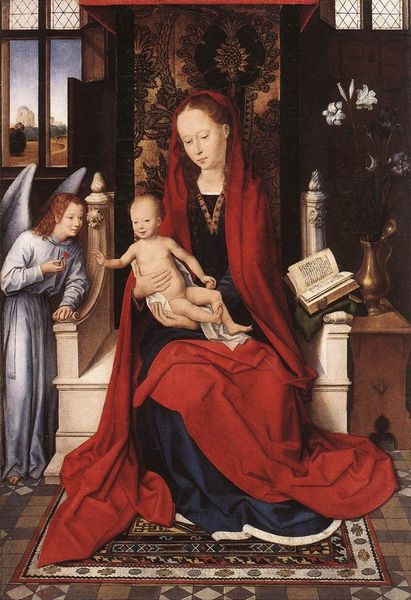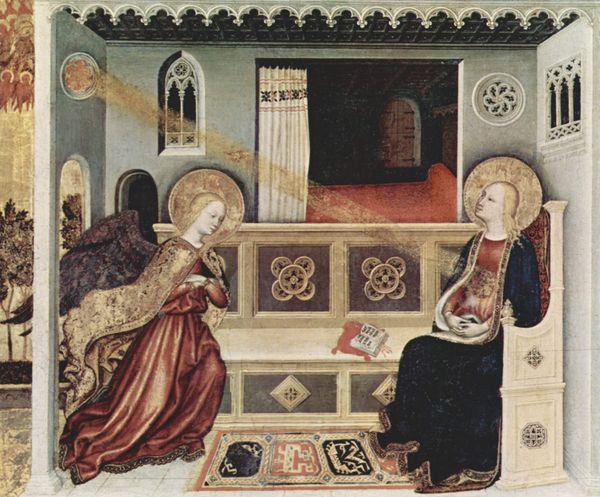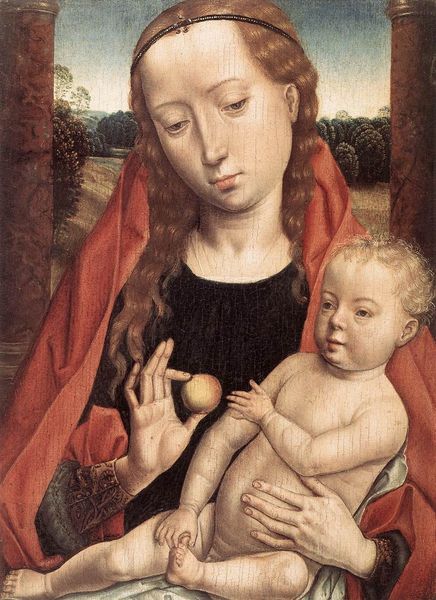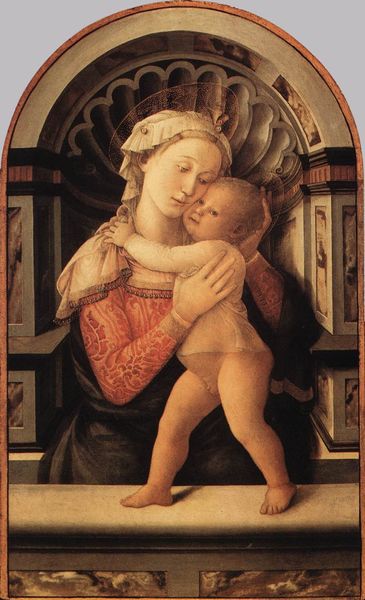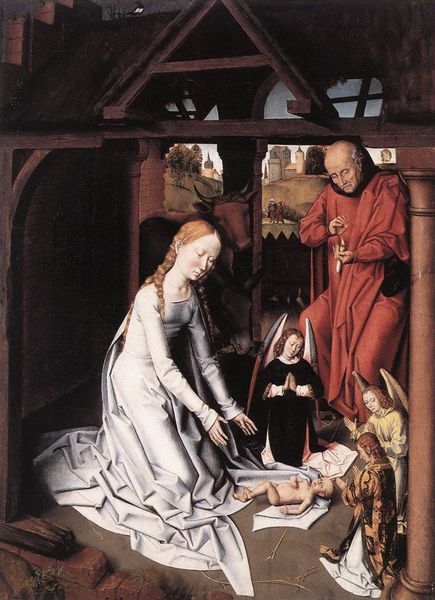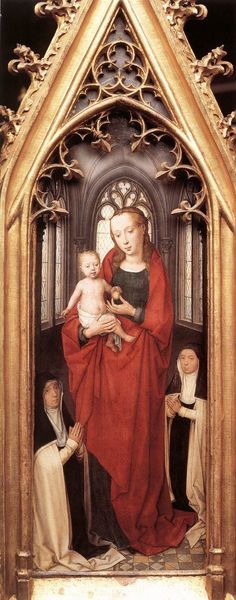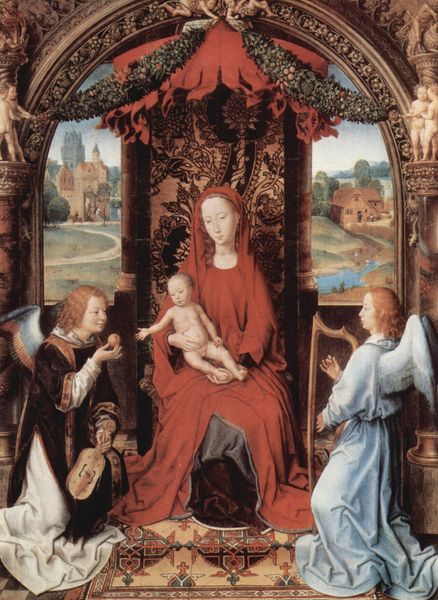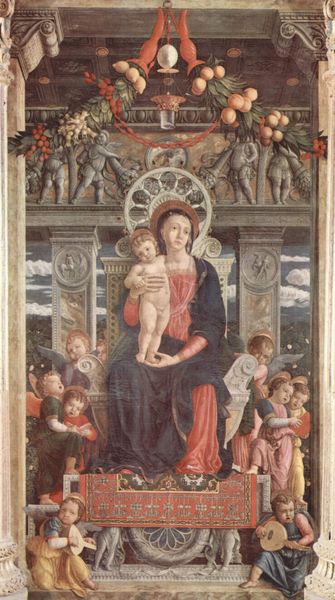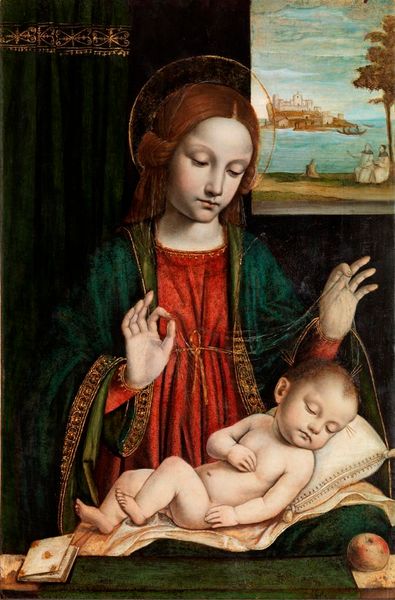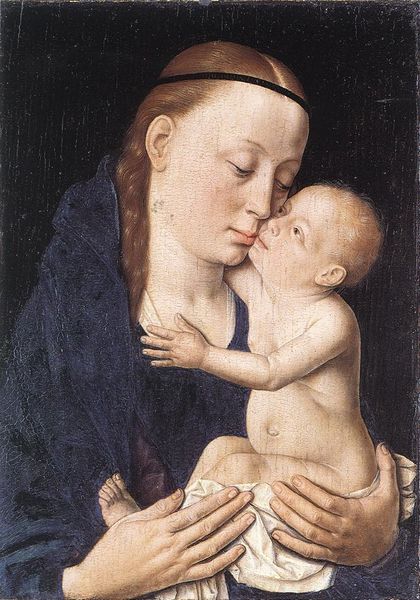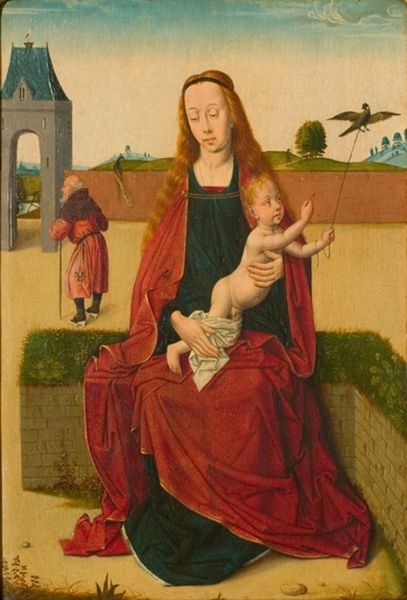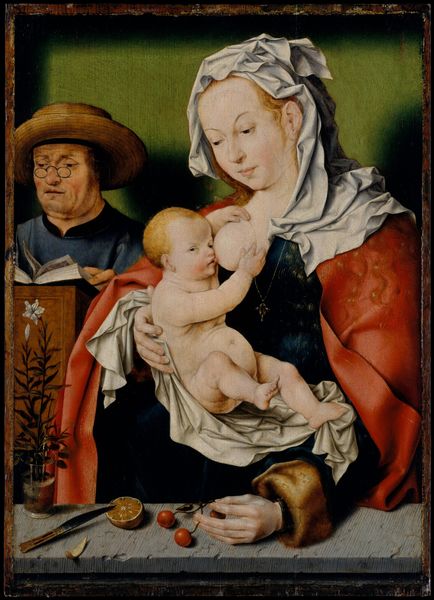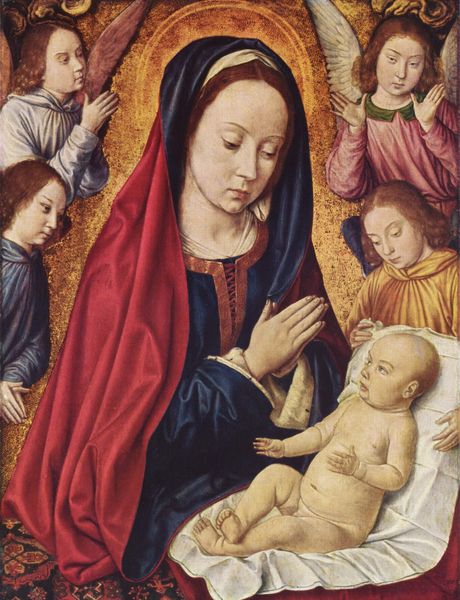
oil-paint
#
portrait
#
oil-paint
#
figuration
#
oil painting
#
christianity
#
history-painting
#
italian-renaissance
#
christ
Dimensions: 55 x 78 cm
Copyright: Public domain
Curator: Look, straightaway the figures stand out for their material reality—there’s a tangible weight in the fabrics, a distinct shine on the gilded halos. This is Bernhard Strigel's "Mary and Joseph with Jesus," oil on panel, dating back to 1506. Editor: It strikes me how grounded it feels despite the halos and biblical subject matter. The quiet domesticity, Mary holding the child, Joseph working diligently... It really brings them into a relatable human context, even across centuries. Curator: Exactly. The painting highlights Joseph's craft—we see his tools, his focused labor. The material production here humanizes these iconic figures, grounding them in a visible reality of work and provision. This reflects, possibly, a patronage deeply rooted in craft guilds. Editor: I agree, seeing Joseph actively working breaks down the patriarchal power dynamic that so often defines depictions of the Holy Family. He's not just a silent observer; he's a contributing member, literally building their reality. And even though she is idealized, Mary seems relaxed, and not a mere symbol of religious piety, which invites interpretations around maternal roles, even empowerment. Curator: Notice also the inscription at the top. These were tangible records for devotion; the act of looking at the painting—a material object, in itself—facilitated interaction with theological ideas. This kind of visualization would bring concepts into everyday lived experience, quite literally! Editor: Absolutely, these tangible links invite exploration of the viewers and patrons. Were they part of a burgeoning middle class looking for new models of family life that incorporated hard work with religious conviction? These types of artworks gave a tangible, visible meaning for a rapidly changing world. Curator: Strigel skillfully depicts these figures in relation to their environment and profession. A key to understanding art's relationship to labor and commerce during this time. Editor: In conclusion, the real beauty of this piece lies not just in its representation of the Holy Family, but in how it mirrors the lives and values of its contemporary audience. By understanding this social environment, we can truly start a discourse about religion and class.
Comments
No comments
Be the first to comment and join the conversation on the ultimate creative platform.
